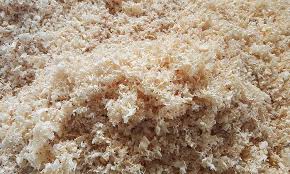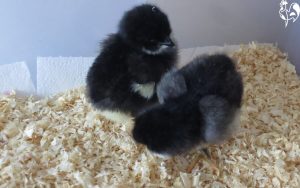Introduction
When it comes to maintaining a healthy and comfortable environment for your feathered friends, choosing the right bedding for your chicken coop is crucial. Among the various options available, pine wood shavings have gained popularity for their affordability, availability, and absorbent properties. In this comprehensive guide, we’ll delve into the pros, cons, and best practices associated with using pine wood shavings as bedding for chickens.
Understanding the Importance of Chicken Coop Bedding
1 The Role of Bedding in Poultry Health
The bedding in a chicken coop serves multiple purposes, with one of the primary functions being moisture absorption. Moisture-laden environments can lead to various issues such as bacterial growth, ammonia release, and discomfort for the chickens. Pine wood shavings excel in their ability to absorb moisture effectively, keeping the coop dry and minimizing the risk of bacterial infections.
2 Significance of Comfort in Chicken Coops
Beyond moisture control, the comfort of the chickens is a paramount consideration. A cozy and well-bedded coop contributes to the overall well-being of the flock. Pine wood shavings provide a soft and supportive surface for chickens to rest, promoting healthy behaviors such as nesting and dust bathing.
3 Introduction to Pine Wood Shavings
Derived from the softwood of pine trees, these shavings offer a natural and economical solution for coop bedding. The soft texture of pine shavings is gentle on chicken feet, reducing the likelihood of foot-related health issues.
Stay Informed about Pine Shavings Toxicity
Recent studies have raised concerns about potential toxicity associated with certain types of pine shavings. It is essential for poultry keepers to stay informed about the specific type and sourcing of pine shavings they use. Not all pine shavings are created equal, and some may contain harmful substances that could jeopardize the health of your chickens.
Referring to “Pine Shavings in the Coop: The Secret Chicken Killer?”
The article titled “Pine Shavings in the Coop: The Secret Chicken Killer?” has garnered attention for its insights into potential risks. While it’s crucial to consider such information, it’s equally important to differentiate between various types of pine shavings and assess the credibility of the sources.
Advantages of Pine Wood Shavings for Chicken Coops

1 Affordability: Cost-Effective Bedding Option
One of the significant advantages of using pine wood shavings is their cost-effectiveness. These shavings are often more affordable than alternative bedding materials, making them a budget-friendly choice for small and large-scale poultry keepers alike.
2 Accessibility: Widely Available in Farm Supply Stores
Pine wood shavings are readily available in farm supply stores, making them a convenient option for chicken keepers. The accessibility of this bedding material ensures that poultry enthusiasts can easily maintain a consistent supply for their coops.
3 Low Dust Levels: Ensuring Respiratory Health
Dust can pose respiratory risks to chickens and their keepers. Unlike some bedding materials that generate excessive dust, pine wood shavings are known for their low dust levels. This characteristic is particularly crucial for promoting respiratory health within the chicken coop.
Considerations and Potential Concerns with Pine Wood Shavings
1 Allergic Reactions and Sensitivities
While pine wood shavings are generally well-tolerated by chickens, some individuals might exhibit allergic reactions or sensitivities. It’s advisable to observe your flock closely when introducing pine shavings and to be aware of any signs of discomfort or respiratory distress. If such symptoms arise, exploring alternative bedding options may be necessary.
2 Disposal and Environmental Impact
Pine wood shavings, while biodegradable, raise considerations regarding disposal and environmental impact. Proper waste management is crucial to ensure that used bedding does not contribute to pollution or harm local ecosystems. Composting can be a sustainable solution, turning used shavings into nutrient-rich compost for gardening.
Best Practices for Using Pine Wood Shavings in Chicken Coops
1 Proper Bedding Thickness and Maintenance
Maintaining an optimal bedding thickness is essential for its effectiveness. Too thin, and it might not provide adequate moisture absorption; too thick, and it can lead to waste and hygiene issues. Regularly inspect and replace bedding as needed to ensure a clean and comfortable environment for your chickens.
2 Integration with Nesting Areas
Pine wood shavings can be strategically integrated into nesting areas to facilitate egg-laying and collection. The soft texture provides a welcoming space for hens to lay eggs, and it simplifies the process of gathering eggs without breakage or contamination.
3 Monitoring and Rotational Practices
Periodically monitor the condition of the bedding and implement rotational practices. This involves removing old or soiled shavings and replacing them with fresh ones. Regular cleaning and maintenance contribute to a healthier coop environment and reduce the risk of pathogens.
Conclusion: Striking the Right Balance
1 Tailoring Bedding Choices to Your Flock
In the realm of poultry keeping, there’s no one-size-fits-all solution. The choice of bedding, including pine wood shavings, depends on various factors such as the size of the flock, local climate, and individual chicken health. Being attuned to your flock’s specific needs and characteristics will guide you in making informed decisions about coop bedding.
2 The Ongoing Conversation in Poultry Keeping
As research evolves and insights into poultry health continue to emerge, the conversation around bedding materials remains dynamic. Stay connected with poultry communities, veterinary recommendations, and updated research to ensure that your practices align with the latest understanding of chicken well-being.
Frequently Asked Questions (FAQs)
To provide you with a comprehensive understanding of pine wood shavings for chickens, let’s address some common questions that enthusiasts and beginners often encounter.
1 How Often Should I Change the Bedding?
The frequency of bedding changes depends on various factors such as the size of your coop, the number of chickens, and local climate conditions. In general, it’s advisable to check and change the bedding regularly, aiming for at least once a week. However, if you notice any soiled or wet areas, immediate spot cleaning is recommended to maintain a clean and healthy environment.
2 Can Pine Wood Shavings Cause Respiratory Issues in Chickens?
While pine wood shavings are generally safe for chickens, some poultry keepers express concerns about potential respiratory issues due to the dust created by certain bedding materials. To minimize dust-related problems, opt for kiln-dried pine shavings, which are low in dust. Additionally, ensure proper ventilation in the coop to promote good air quality.
3 Are Pine Wood Shavings Suitable for Chicks?
Yes, pine wood shavings can be used for brooding chicks. However, it’s crucial to provide a shallow and easily accessible area with clean, dry bedding. Chicks are curious and may peck at the bedding, so choosing a material like pine shavings, which is safe for ingestion in small quantities, is important.
4 Can I Use Pine Wood Shavings with Other Bedding Materials?
Certainly! Many chicken keepers combine pine wood shavings with other bedding materials, creating a custom blend that meets the specific needs of their flock. Popular combinations include straw, hay, or shredded paper. Experimenting with different ratios allows you to find the ideal mix that balances absorbency, insulation, and comfort for your chickens.
5 How Deep Should the Bedding Be?
Maintaining an appropriate depth of bedding is crucial for your chickens’ well-being. Aim for a depth of at least 2 to 4 inches, ensuring that it provides adequate cushioning, insulation, and absorption. Adjust the depth based on your climate, with deeper bedding recommended in colder regions for added insulation.
6 Are There Any Alternatives to Pine Wood Shavings?
Yes, several bedding alternatives exist for chicken coops, catering to various preferences and requirements. Some alternatives include straw, hay, shredded paper, and even sand. Each option comes with its own set of pros and cons, so it’s essential to consider factors such as absorbency, insulation, and availability when choosing the best bedding material for your specific situation.
7 How Can I Make My Own Pine Wood Shavings?
If you prefer a hands-on approach, you can make your own pine wood shavings by using a wood chipper or purchasing untreated wood and processing it through a suitable machine. Ensure that the wood is free from chemicals or contaminants that could harm your chickens. However, for most chicken keepers, purchasing pre-packaged pine wood shavings from reputable suppliers proves to be a convenient and reliable option.
8 Can Pine Wood Shavings Attract Pests?
While pine wood shavings themselves are not particularly attractive to pests, maintaining cleanliness and regular coop maintenance is crucial to preventing pest infestations. Dispose of soiled bedding promptly, seal food containers securely, and conduct routine checks to ensure a pest-free environment for your chickens.
9 What Are the Signs of Allergic Reactions in Chickens?
Allergic reactions in chickens may manifest as respiratory distress, excessive sneezing, or watery eyes. If you observe any of these signs, it’s essential to evaluate the bedding material and the overall coop environment. Consider switching to a low-dust option, such as kiln-dried pine shavings, and consult with a veterinarian if symptoms persist.
10 Are There Different Types of Pine Wood Shavings?
Yes, there are different types of pine wood shavings available, and the distinction often lies in the processing method. Kiln-dried pine shavings are heated to remove excess moisture and dust, making them a cleaner and safer option. Non-kiln-dried shavings may retain higher moisture content and can be dustier. When selecting pine wood shavings, opt for high-quality, kiln-dried options to ensure the best environment for your chickens.
